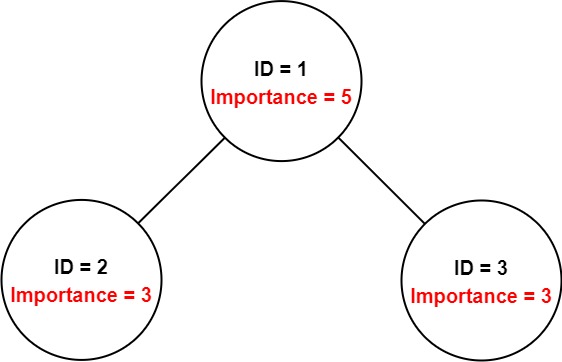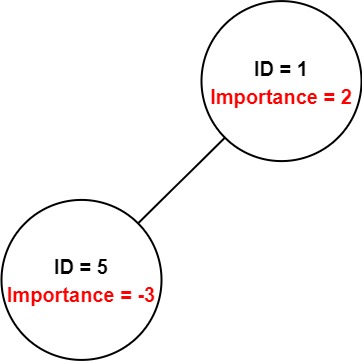public class Solution
extends Object
690 - Employee Importance\.
Medium
You have a data structure of employee information, including the employee's unique ID, importance value, and direct subordinates' IDs.
You are given an array of employees `employees` where:
* `employees[i].id` is the ID of the ith employee.
* `employees[i].importance` is the importance value of the ith employee.
* `employees[i].subordinates` is a list of the IDs of the direct subordinates of the ith employee.
Given an integer `id` that represents an employee's ID, return _the **total** importance value of this employee and all their direct and indirect subordinates_.
**Example 1:**

**Input:** employees = \[\[1,5,[2,3]],[2,3,[]],[3,3,[]]], id = 1
**Output:** 11
**Explanation:**
Employee 1 has an importance value of 5 and has two direct subordinates: employee 2 and employee 3.
They both have an importance value of 3.
Thus, the total importance value of employee 1 is 5 + 3 + 3 = 11.
**Example 2:**

**Input:** employees = \[\[1,2,[5]],[5,-3,[]]], id = 5
**Output:** -3
**Explanation:**
Employee 5 has an importance value of -3 and has no direct subordinates.
Thus, the total importance value of employee 5 is -3.
**Constraints:**
* `1 <= employees.length <= 2000`
* `1 <= employees[i].id <= 2000`
* All `employees[i].id` are **unique**.
* `-100 <= employees[i].importance <= 100`
* One employee has at most one direct leader and may have several subordinates.
* The IDs in `employees[i].subordinates` are valid IDs.